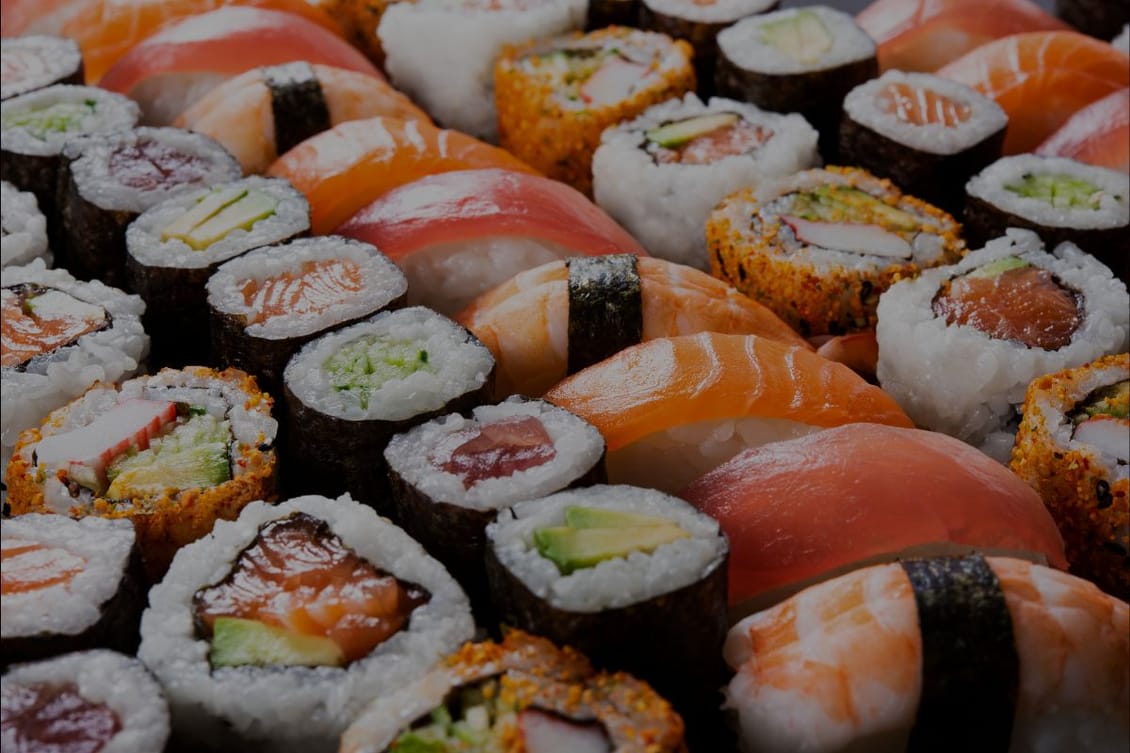
For thousands of years, fish has been a valuable part of diets around the world. According to the UN’s Food and Agriculture Organisation (FAO), our global seafood consumption has risen by 228% over the last 60 years.
And with good reason. Fish is a low-fat protein source, packed with all-important omegas and fatty acids. And not only is fish delicious, it’s versatile too – you can poach it, bake it, braise it, steam it, grill it…and of course, eat it raw.
Eating raw fish has been a part of Japanese food culture since the Edo period, which started in 1603.
The rice that’s now familiar to sushi consumers worldwide was actually used to help preserve fish that had been salted, and would later be thrown away once the preserved fish was eaten. In later years, vinegar was used to add flavour to fish and rice, and this combination became known as ‘sushi’.
And contrary to popular belief, ‘sushi’ doesn’t mean ‘raw fish’. It actually translates to ‘sour rice’ – a nod to the distinct flavour from the added vinegar.
Sushi is convenient, nutritious, and delicious. It’s also adaptable, with ingredients easily adjusted to suit different regional palates. And as health-conscious lifestyle choices grew in popularity, the sushi market also scaled.
The sushi restaurant market size is set to grow by $3.81 billion over the next four years. And as well as being a strong food choice for consumers seeking healthier options, sushi also offers a unique experience for diners.
Kaitenzushi – when sushi arrives by conveyor belt – is a distinctive feature of fast-paced sushi restaurants, invented a way of keeping up with busy periods by serving customers simultaneously, leaving chefs to focus on fulfilling food orders.
And at the higher end of the market, many sushi restaurants have open kitchens. The transparency lets customers eat with their eyes, engage in cooking smells, and feel a part of the full sushi experience. It promotes trust in the preparation process, and enhances the dining event for customers with a full sensory experience.
Sustainable food choices are high on the global agenda. People want to know where their food is from and the journey it’s taken before they eat it – because more and more, consumers want to minimise their impact on the planet.
The popularity of sushi as a healthy food option in a crowded health-conscious world has made it a go-to meal for busy people, and for those wanting to indulge in restaurant quality food while maintaining a healthy diet – and fishing industries have kept up with that demand.
Overfishing to keep up with supply, and the use of destructive fishing tactics that damage marine ecosystems, puts biodiversity at risk. And in turn, this jeopardises the future of the fish food chain. Around one third of the world’s fish stocks are being overfished – and it’s not sustainable.
Some sushi dishes include hard-to-come-by, rare and coveted ingredients, like bluefin tuna (a single bluefin tuna fish sold for $1.76 million in 2013). And due to demand for specific species, the WWF warns that some fish populations are declining in numbers and health.
As well as decreasing fish populations, farming for species including salmon, shrimp, and tuna has driven increased carbon emissions which have a broader impact on marine ecosystems and climate change. And at the same, warming oceans are affecting fish populations – putting fishing and the sushi market in a difficult position.

Education about sustainable food choices to protect the plant is increasingly prominent on food packaging and on menus. So it’s no wonder we’re seeing unique ways to improve sushi’s sustainability credentials.
Some innovators are repurposing sushi bi-products, while others are leveraging sustainable fish alternatives – spurred on by the impressive 12.95% CAGR of the global vegan food market, which promises profitability as well as planet-friendly opportunities.
We love:
Small-scale innovators can have a valuable impact on their immediate market – but for sushi to be sustainable into the future, we need to understand exactly where our fish is coming from, the impact it’s having, and when we’re fishing or farming too much.
At all stages of the supply chain, the sushi industry needs to:
And at sushi restaurants, trusting the chef could be key to sustainable menus.
In a 2023 interview with Forbes, award-winning Michigan chef Hajime Sato explained why he uses the concept of Omakase, or ‘leave it to the chef’, at his restaurant. Essentially, it encourages diners to trust the chef to choose their meals for them – minimising customer choice and relying on the chef’s knowledge to delight them with surprising dishes.
It requires trust between chef and diner. But when it works, it allows restaurants to be more focused on sustainable fish sourcing – because they’re not constantly trying to match changing consumer tastes.
“Omakase probably is the best way not only to eat sustainably but to discover your new favourite sushi items,” Sato told Forbes. “For Omakase, chefs serve only the most delicious seafood from the market that day. You become so satisfied that you forget you did not get your regular favourite items.”
Monitor fishing sources and practices, integrate new technologies, and trust the chef: so sushi can stay in our lives for a very long time.
Register now to attend InFlavour 2024 happening from October 1-3 at Riyadh Front Exhibition and Conference Center (RFECC).
Take your seat at the InFlavour table, a government-backed and world-leading B2B food event by Tahaluf.
E-mail address SubmitWant to keep up to date with all our latest news and information? Enter your name below to be added to our mailing list.
E-mail address Submit